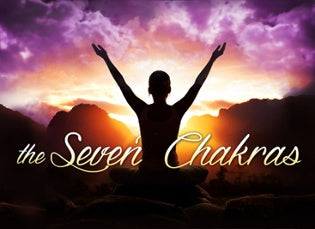 During yoga class, you might hear your teacher mention chakras. It could be in the context of balancing your chakras or focusing on a specific chakra to support digestion, open communication, or another area of health and happiness.
During yoga class, you might hear your teacher mention chakras. It could be in the context of balancing your chakras or focusing on a specific chakra to support digestion, open communication, or another area of health and happiness.
But what are these seven chakras and what do they do? Below is your beginner’s guide.
What Is a Chakra?
The word chakra is Sanskrit for wheel. Think of the seven chakras as seven wheels along your spine that—when unblocked—allow energy to flow through our minds, bodies, and spirits. When your chakras are balanced, you can feel healthy, strong, fluid, energetic, confident, connected, or peaceful. When unbalanced, you may feel sick, weak, insecure, restless, disconnected, or lethargic.
Yoga and meditation teach us to be more self-aware, helping us understand the interplay between the physical, emotional, and spiritual. So when something feels a little “off” it is the chakra that’s out of alignment. We can then identify and nurture that part of ourselves.
Each chakra supports specific aspects of our physical, emotional, and spiritual health. Here’s a quick overview of the seven chakras, from the base of the spine to the top of the head.
The Root Chakra
The root, or muladhara in Sanskrit, chakra is located at the base of the spine. It’s our connection to core values and our basic survival needs. When balanced, we feel stable, safe, confident, and secure. When unbalanced, we can feel depressed, tired, and insecure, and face challenges supporting ourselves financially and physically.
The Sacral Chakra
The svadhisthana, or sacral, chakra sits above the pubic bone and below the navel. It’s our center of creativity, sexuality, and emotion. Passion, desire, and creative expression flow freely when unblocked. A blocked sacral chakra can lead to challenges with the physical and emotional elements of sex, commitment, new experiences, and creativity.
The Solar Plexus Chakra
The solar plexus chakra is located above the navel, below the heart. Called the manipura chakra in Sanskrit, it’s our source of self-confidence and trust in ourselves. When balanced, we feel confident, loving toward ourselves, in control, and assertive. An unbalanced solar plexus chakra brings up feelings of self-criticism, nervousness, and uncertainty, which can physically manifest in digestive problems.
The Heart Chakra
Anahata chakra is located at the center of our hearts, or, as your yoga teacher says, “heart center.” This chakra sits at the center of the seven chakras, and connects the more physical chakras (root, sacral, solar plexus) with the spiritual (throat, third eye, crown). The heart chakra is our center of love, connection, and harmony. Love, joy, peace, and trust flow when balanced; jealousy, anger, and detachment emerge when unbalanced.
The Throat Chakra
Called vishuddha chakra in Sanskrit, the throat chakra sits at the base of the neck. It’s the source of open communication and expression of our truth. When this chakra is balanced, we’re able to share our thoughts and feelings, be open and honest, and listen more closely. When blocked, we can shy away from the truth, and struggle to speak up for ourselves or communicate our needs.
The Third Eye Chakra
The third eye, or ajna, chakra rests between the eyebrows. From this chakra comes intuition and wisdom. With a balanced third eye chakra, we are self-aware, insightful, reflective, and intuitive. Out of sync, it can manifest in mood swings, an inability to plan or make decisions, and erratic feelings and behavior.
The Crown Chakra
Sahaswara chakra sits at the crown of the head. It’s our link to the divine, our highest and most spiritual selves. A balanced crown chakra supports feelings of purpose, mindfulness, trust, and deep connection with the energies around us. An unbalanced crown chakra leads to rigid thoughts, lack of trust in your personal destiny, and detachment from the spiritual world.
Now that you know the chakras, where do you feel misaligned? Next time you meditate or sit in yoga class, start to focus on the areas that need attention. Not only will you start to get a feel for the chakras, your time balancing on a mat will lead to a more balanced mind, body, and spirit.

